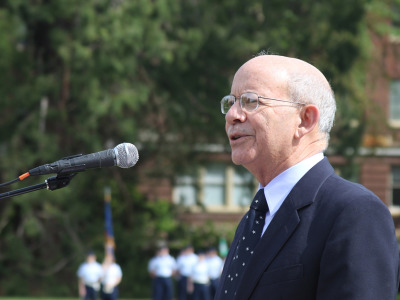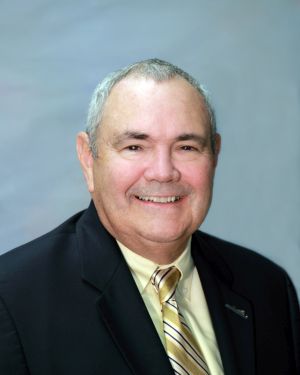The government shutdown is grabbing the headlines, but behind the scenes, there is widespread anticipation and ideas for a hefty infrastructure funding package on Capitol Hill, urged on by major economic sectors.
Agribusiness is among the boosters. “There is broad interest (in Congress) in an infrastructure package,” says Todd Van Hoose, president of the Farm Credit Council (FCC).
“While transportation is clearly the keystone . . . we hope other committees will have ideas . . . including the ag committee. There is still a lot to be done in rural health care . . . housing . . . rural water,” he says.
Van Hoose and FCC, in fact, also coordinate Rebuild Rural, a broad ag sector coalition pressing for any U.S. infrastructure package to include substantial agricultural and rural investments in “agricultural research, transportation, broadband, water, energy, health care, housing and finance.”
The American Farm Bureau Federation, a Rebuild Rural partner, estimates, for example, an $8.4 billion sum of deferred maintenance on U.S. agricultural research buildings and related infrastructure.
So, agriculture interests want action and an infrastructure initiative “tends to be something that both parties can really get behind,” says R.J. Carney, AFBF director of congressional relations.

Rep. Peter DeFazio, D-Ore., will take over the House Transportation and Infrastructure Committee.
Still, the political starting points may vary for the government’s principal players:
- In the House of Representatives, Democrats speak of trying out their new majority with infrastructure funding. There, Rep. Peter DeFazio, an Oregon Democrat with a heavily agricultural district, will chair the Transportation and Infrastructure Committee and has declared a top priority for a short-term infrastructure package this year.
- Infrastructure advocates are abundant in the Senate, and Republicans from some heavily rural states will head committees at the helm of infrastructure funding legislation. Iowa Republican Chuck Grassley will chair the Finance Committee, which oversees taxation, Mississippi Republican Roger Wicker will chair the Commerce Committee, and John Barrasso, R-Wyo., will retain chairmanship of the Environment and Public Works Committee.
- President Trump, meanwhile, campaigned promising an infrastructure initiative and rolled out a 10-year, $1.5 trillion proposal last February that would depend mostly on local, state and private spending. But his intent remains elusive and unpredictable. A year ago, he told congressional Republicans that infrastructure was his top priority, but he has also undercut his own concept of leveraging public-private partnerships to pay for most of such projects, complaining that such funding schemes don’t work. Also, he recently tweeted that he “will not sign” any legislation the Democrats favor “including infrastructure,” unless his southern border wall is funded.
However, the 2015 highway bill, named the FAST Act, will expire in 2020, so expect a replacement to soon get attention. DeFazio told Agri-Pulse that he will work with Senate panels to draft a new highway/transit bill. "We need to have real federal investment, particularly when we need to address the concerns of rural America," he said, and he plans to reintroduce his own bill from the last Congress that would add a penny to highway fuel taxes to repay bonds used to finance infrastructure projects.
Advocacy for a highway bill and other capital improvements spending is mounting. Indeed, Congress has already pressed ahead with some big infrastructure investments recently, especially for U.S. Army Corps of Engineers projects for both inland waterways and the ports.
Waterways Council President Mike Toohey says “we had really good outcomes in the funding arena,” as Congress approved the Corps appropriations for FY 2018 and FY 2019 construction during 2018, “so, essentially, we had two years of funding released almost back to back.”
What’s more, Congress passed the 2018 Water Infrastructure Act, approving water projects for years ahead, plus it ordered stepped-up use of revenues from the Inland Waterways Trust Fund and Harbor Maintenance Trust Fund for marine projects, repairs and renovations.

Mike Toohey, Waterways Council
For example, Toohey said at least $399 million was made available in FY 2018 for priority inland waterways navigation projects, which was 128 percent more than the Trump Administration had requested.
Also, in the communications arena, the Federal Communications Commission, with its Mobility Fund Phase II (MF-II) is implementing a new round of $4.5 billion in grants over 10 years to telecom companies to expand broadband mobile access primarily to rural areas.
AFBF’s Carney is among many rural advocates who complain about faulty mapping of broadband access before the FCC – erroneously showing unserved locations as served. That’s a serious problem in FCC grant programs, he says, and notes that several state Farm Bureaus have legally challenged such mapping posted in some states for the MF-II grants.
“The accuracy of maps is so critical,” he says, to getting farmers access to the high-speed signals they need for precision farming.
Note, too, that Senator Angus King (I-Maine) successfully inserted a provision in the 2018 farm bill directing the FCC to create a task force to find the unserved gaps in high-speed internet connectivity in agricultural areas.
Meanwhile, Congress included in a big budget bill last February the funding for USDA’s new round of $600 million in grants and loans for rural broadband expansion. Called “Reconnect,” its rules call for new, higher minimum transmission speeds and targets rural areas where 90 percent of the households remain unserved with at least 10 megabytes per second download speed.
Look for leaders in the new Democratic-majority House, as well, to make broadband access a principal part of any infrastructure bill. A year ago, they were promoting $40 billion in rural broadband investments, part of the party’s A Better Deal proposal.
The high urgency, meanwhile, for a surface transportation bill stems largely from the frayed state of national transportation funding. Federal fuel taxes (18.4 cents a gallon on gasoline and 24.4 cents on diesel) haven’t been increased in over a quarter century, leaving revenues into the Highway Trust Fund far short of actual annual federal road and bridge spending. In 2015, rather than fund the federal share of transportation with user fees, the practice for decades, Congress borrowed to pay for much of the highway bill.
Now, a host of interests are urging higher gasoline and diesel fuel taxes and more use of highway and bridge tolls to pay for a flagging U.S. surface transportation network. That’s the recommendation in a new report by the National Academies of Sciences, Engineering and Medicine (NAS), which outlines a 20-year “Interstate Highway System Renewal and Modernization Program.”
Said the NAS: “The future of the U.S. Interstate Highway System is threatened by a persistent and growing backlog of structural and operational deficiencies and by various looming challenges, such as the progress of automated vehicles, developments in electric vehicles, and vulnerabilities due to climate change."
Without a commitment to fix those deficiencies and prepare for new challenges, "there is a real risk that the nation's interstates will become increasingly unreliable and congested, far more costly to maintain, less safe, incompatible with evolving technology, and vulnerable to the effects of extreme weather," NAS said.
AASHTO, which represents state transportation agencies, estimates that federal fuel excise tax rates have lost 41 percent of their purchase power since the last increases in 1993.
Meanwhile, the Association of Equipment Manufacturers launched its own national campaign in 2017, called the U.S. Infrastructure Advantage. Among other things, the initiative promotes a long menu of investments in a national “Infrastructure Incentives Program” and a “Rural Infrastructure Program,” targeting all modes of transportation, waterways, broadband, water supply, sewer systems, flood control, and the electrical grid.
To fund such programs, AEM urges “widespread adoption of user fees, such as a gas tax, for all publicly supported infrastructure assets (including) ports, waterways, toll roads, or high-occupancy-vehicle lanes in urban areas.” It argues for diverse resources to support long-term solvency of the Highway Trust Fund.
The American Trucking Association, not surprisingly, is focused on increased resources to improve roads and bridges. The ATA truck tonnage index (tons trucked nationwide monthly) is up 7.6 percent in the past year, nearly 20 percent since 2015, and truckers are increasingly stymied by traffic congestion, says Darrin Roth, ATA vice president for highway policy.
Truckers are facing a worsening driver shortage nationwide – “one of our biggest challenges,” Roth says, “and congestion certainly contributes to the driver shortage.” He points to an American Transportation Research Institute report estimating traffic holdups cost U.S. truckers $74 billion in 2016, up 0.5 percent from the year before.
Although 27 states have increased their own fuel taxes in the past five years, Roth says that most state transportation departments, lacking increases in federal dollars, have adopted a “preservation policy . . . sacrificing the performance of the highway system in order to maintain it better. In order to fix all of our roads and bridges,” he says, “we would need to double the investment in the highway system.”
Roth acknowledges the way rising auto fuel efficiency is throttling down federal fuel tax revenue, but he says that source of revenue can “be viable for at least the next 10 years.” ATA, in fact, proposes a “double indexing,” nudging the rates up to adjust for both inflation and gains in average U.S. fuel efficiency.
For more news, go to www.Agri-Pulse.com.


